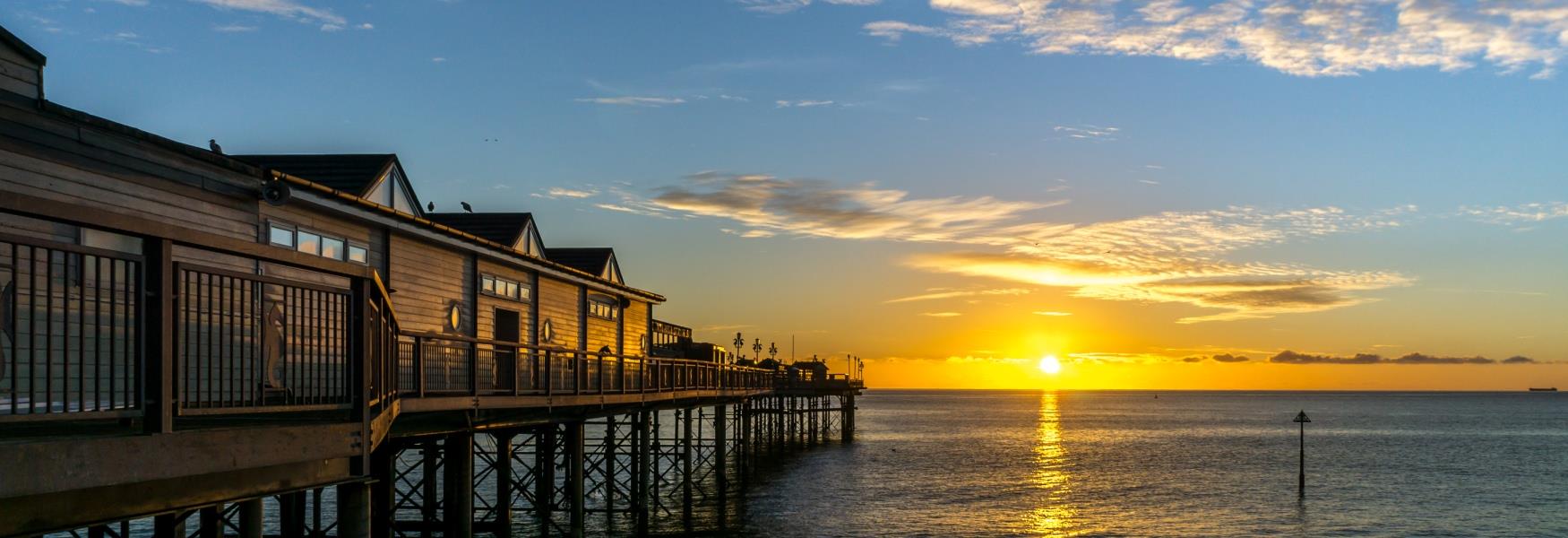
South Devon has a long and fascinating maritime history stretching back a millennia. Several cities, towns and villages such as Plymouth, Beer and Brixham all have a rich, nautical heritage and thus it’s no surprise that they also have many-a-tale of pirates, smugglers and privateers.
Piracy was common for several centuries, dating as far back as the Roman era to the 19th century; with coastal towns in South West England being on the frontier of their lawlessness, most probably due to our proximity to the English Channel. Throughout the Middle Ages, piracy was a big threat for people living in the small coastal communities of South Devon. Many settlements moved inland of the coast to protect themselves from these ruthless marauders.
As Queen Elizabeth’s war with Spain grew between 1585 - 1603, piracy gave way to privateering, meaning that private ship owners and soldiers were given authority by the state with a letter or marque of reprisal to loot treasure from enemy ships. This ‘booty’ would be returned it to England where the privateers would be rewarded plentifully by the Queen. However, when James I came to the throne, he cut back these naval recruitments and ordered his English subjects to cease privateering. Therefore many privateers were out of work and returned to piracy. Salcombe and other marine towns along the South Devon coastline became places of refuge for these men.
As of the 1620s the region faced new threats from pirates from North Africa, often referred to as ‘Barbary pirates’ throughout history. Over the course of the century a large number of British ships and people were captured by these pirates. Devon and Cornwall lost roughly twenty percent of their shipping through these raiders burning settlements, sinking ships and carrying men, women and children off to be slaves.
Later on in the late 18th century, English pirate and smuggler, Jack Rattenbury resided in the town of Beer and used the Beer Quarry Caves to hide contraband. He was commonly called ‘The Rob Roy of the West’ and went on to write a book ‘Memoirs of a Smuggler’ compiled from his diary. Today you can see the entrance to the cave said to have been one of his smuggling holes at the Hooken Cliffs. According to legends, there’s a cave here that leads straight to Branscombe Church!
There were many other infamous pirates and privateers with connections to South Devon, each with their own fascinating story of life at sea. Read on to discover more.
John Hawley of Dartmouth
A successful and adventurous Dartmouth merchant, John Hawley is a well-known pirate of the middle ages and was actually mayor of the town 14 times, plus elected MP for Dartmouth twice!
He was a pillar of society and was responsible for building the Dartmouth Castle and funded St Petrox Church. However, he also certainly caused havoc on the English Channel between the 1370s and 1400s as a privateer, making himself very wealthy in the process. Although during this he was accused of piracy many times.
Hawley’s life at sea was very colourful, he raided several ships, seized many belongings and even had a brief stint of being imprisoned at the Tower of London. He was buried at St Saviours Church in Dartmouth where a magnificent brass monument stands depicting him as a fully-armoured knight with his two wives.
John Nutt
Born in Lympstone, near Exmouth, John Nutt is one of the more notorious pirates of the region. Sometime during the 1620s he travelled to Newfoundland as a gunner on a Dartmouth ship before deciding to organise a small crew with whom he seized a couple of French ships and fishing boats. Interestingly the area he settled in was named Torbay, after the one in Devon.
He enjoyed this life for a few years, avoiding several attempts of apprehension, before requesting a royal pardon from Vice Admiral of Devon John Eliot so he could return to England. He was offered this pardon in exchange for a £500 bond, however once he set foot on land he was arrested and convicted of piracy.
Nutt was due to be hung when George Calvert, the Secretary of State intervened and he was pardoned, receiving £100 in compensation. John Eliot was then charged with abusing his position and was imprisoned.
Captain John Philips
Also from Lympstone and travelled to Newfoundand, John Phillips was a cod fisherman who turned to piracy. His career as a pirate barely lasted a year, but during this time it’s said that he seized over thirty vessels in an area boarded by the West Indies and North America.
His piracy and life came to an end at the hands of fellow pirates, first losing a leg during a fight and then having his skull crushed in a mutiny. His head was cut off and hung from the bowsprit before being sent to Boston in a pickle barrel!
Sir Frances Drake
In England Sir Frances Drake is typically known as a patriotic hero for his attacks against the Spanish Armada, but to many others, especially Spaniards, he’s most definitely remembered as a pirate. He raided many Spanish and Portuguese ships and ports whilst circumnavigating the world. His role as a privateering and an early slave trader reveal a darker side to this iconic figure.
Sir Frances Drake was born in Tavistock. In his early marine life, he worked for the Hawkins family who owned a successful merchant fleet. John Hawkins became the first Englishman to establish a slave trading venture alongside Drake partly funded by London merchants and sanctioned by Queen Elizabeth I.
After three slave trading expeditions he then focused his attention on attacking the Spanish in 1577 who were attempting to invade England to avenge the death of Mary, Queen of Scots. His expedition left Plymouth comprised of five ships: the Pelican, Elizabeth, Marigold, Swan and Christopher manned by a total of 164 men. Upon his return in 1580 Sir Frances Drake was knighted by Queen Elizabeth for his achievement and bringing back many treasures. With his share of the reward he went on to purchase Buckland Abbey, just outside of Tavistock.
Drake was ordered to lead an expedition in 1585 when England were officially at war with Spain and left Plymouth with a fleet of twenty-one ships. Drake lived on the ocean and in Plymouth for many years after before catching dysentery and being buried at sea.
Sir Walter Raleigh
Sir Walter Raleigh, born in Hayes Barton in East Budleigh, is another notorious traveller and so-called pirate of Devon. He’s known to be one of the most famous explorers of Queen Elizabeth I’s reign, as well as being a scholar, a poet and for introducing tobacco and potatoes to Britain.
Like Sir Francis Drake, he’s regarded as a hero to the Brits, however in Irelands he was involved in two massacres, one at Smerwick and another at Rathlin Island. The Queen favoured Raleigh at this time, giving him a knighthood and the opportunity to travel to America in 1587. It was then that he participated in the colonisation of North Carolina and Roanoke Island.
In 1588 he took part in the victory over the Spanish Armada and led other raids against Spanish possessions. His favourability of Queen Elizabeth was soon relinquished when she found out that he was secretly married to one of her maids-of-honour and was subsequently sent to the Tower of London, twice – the second time was by Elizabeth’s successor, James I who charged him with treason.
Raleigh stayed imprisoned there until 1616 and he travelled to South America to search for gold. He invaded and pillaged a Spanish territory at a time when the King was seeking peace with Spain and so he was arrested once again and sentenced to death by execution.
Henry Every/Avery
Henry Every was a pirate known by many names including Henry Every, Henry Avery, John Avery and Long Ben. Dubbed the ‘King of Pirates’ he’s probably most famous for being one of the few captains to escape with his loot without being arrested or killed in battle.
Henry Every was born in Newton Ferrers, a small village on the edge of Plymouth which today is a slice of pure tranquillity, surrounded by ancient woodlands and sitting on the bank of the Yealm estuary.
The Atlantic and the Indian ocean is where Every based himself during his time as a pirate, which came about whilst he was a first mate aboard a warship named Charles II. The shipmates became disgruntled with their treatment and they mutinied, electing Henry Every as captain.
Every’s most infamous raid was on a 25-ship convoy of Grand Mughal vessels including the treasure laden Gnahjah dhow Ganji-i-Sawai. They seized around £600,000 in precious metals and jewels, equating to around £97.1 million today. This led to a worldwide manhunt, the first of its kind, and many of his crew members were arrested.
Heny Every eluded capture and vanished from all records, his whereabouts from this time to his death is unknown but it’s rumoured that he squandered all his money and returned to Britain. However, others have said that he made his way to Madagascar and lived there as King with his own fleet and men.
Mary Read
Let’s not forget the women throughout pirate history, whilst it was incredibly rare, female pirates certainly did exist. Mary Read gained fame by sailing with the infamous Calico Jack and Irish pirate Anne Bonny and was active in the Bahamas during the Golden Age of Piracy.
Details of Read’s life prior to piracy is not well known, but it is thought that she grew up in Plymouth. During her life as a pirate she would dress as a man in battle, some stories have been told that Mary disguised herself as a man to her shipmates also, but the likeliness of this is questionable due to the cramp quarters they would have shared together.
She fought courageously in her last stand against the authorities in 1720 whilst her male counterparts hid below deck. Both Mary Read and Anne Bonny were captured and sentenced to be hung but their executions delayed as they were both pregnant. Read then passed away in prison of fever in 1721.
Pirate Events in South Devon
If you fancy reliving the days of the pirates, South Devon has many wonderful events to take part in. In April and May Brixham and Plymouth hold their very own pirate festivals with a swashbuckling mix of fun and entertainment. Learn how to walk and talk like a pirate with period re-enactors and get a taste of what it would have been like on the frontline of the decks with an authentic artillery display. Find out more about Brixham Pirate Festival here and Plymouth Pirate Weekend here.
Seaton Tramway also hold a special Pirate Tram throughout the year where families can board the Seaton Pearl which follows the Axe Estuary from Seaton to Colyton. You can also discover more about the South Ham’s history – pirates, plagues and all the rest with Field Studies Council’s Slapton’s Horrible History Tour.
Discover more of South Devon’s past in our History & Heritage blog posts section here. Stay up to date with our latest competitions, blog posts and more by signing up to our e-newsletter or following us on Facebook, Twitter and Instagram.
Related
Comments
Comments are disabled for this post.



 to add an item to your Itinerary basket.
to add an item to your Itinerary basket.









